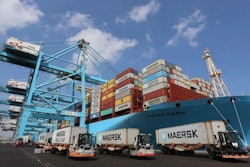
Up until the early 2000s, software updates were done almost exclusively via shrink-wrapped commercial distribution or bespoke on-premise implementations. These were costly affairs to the companies producing the software because the approach required the software to be “perfect.” Older distributions of Windows offer a great example of this—service packs were distributed on floppy disks.
In order to minimize risk around expensive software distributions, Microsoft, SAP, Oracle and the vast majority of business systems providers used a product development methodology known as Waterfall. That is, companies create a list of features, functions and bug fixes that their research told them were important. Due to high distribution and customer disruption costs, they would then try to cram as many of these updates into their distribution or software update as possible. This cycle frequently lasted 12 or more months. During these long cycles industries and businesses continued to evolve, often resulting in the software distribution missing valuable features that emerged during that 12-month period.
Waterfall-based product development has historically been common in supply chain software, but 2020 is the year in which waterfall needs to be replaced by leaner and more agile methods.
Agile 101
As more technologies and products began to leverage the internet for distribution of updates or shifted to web-based experiences, the disruption of updates and the challenges of distribution decreased. This empowered savvy technology companies to take advantage of shorter development cycles to get changes into customers' hands faster. This led to happier customers and a tangible competitive differentiator.
These practices coalesced into what is today known as Agile software development methodologies. The core principles of Agile software development are about responding quickly to changes in customer needs, eliminating waste generating activities and prioritizing value generating activities above all else.
This is principally accomplished through the concept of development sprints (or iterations). These are often 1- to 3-week intervals where small teams of product development professionals (designers, product managers, and engineers) focus on a finite set of features or business outcomes and deliver a working feature or product at the end of that interval, gather feedback from their customers (including internal stakeholders) and then start the process over again.
The biggest difference between agile methods and traditional waterfall is that change can be responded to rapidly (between sprints or iterations). This means the business can dynamically adjust priorities as necessary while still delivering value and collecting important feedback on the output of each sprint. This simply isn’t tractible with waterfall methodologies.
Why agile is ideal for supply chain
Supply chain professional trade in exceptions. Whether it’s traffic inhibiting a truck driver from arriving on time or mother nature wreaking havoc on the ports with massive swells, there are thousands of things outside the control of a logistics practitioner that hinder the best-laid plans. And, there’s no comprehensive list of what tomorrow’s hurdle will be; that list is nearly limitless.
In other words, supply chain professionals need to have the software tools they use become reactive to their individual situations. They need a solution that keeps up with state-by-state regulations as they’re implemented. They need a set of tools that incorporate data from hundreds of sources that are created every day.
They need their software suppliers to use agile methods.
Why agile hasn’t fully caught on (yet)
There are a few real issues with agile practices gaining mainstream logistics acceptance. The first relates to some of the largest software providers in the space. 20 years ago, there was a saying in enterprise IT that “no one was ever fired for hiring IBM.” It was safest to go with the biggest provider of software because it’s what everyone else had done.
That approach is commonplace in supply chain management today; some of the websites from leading solutions providers look like they were created to load on the dial-up connection offered (and delivered through CDs sent in the mail) by AOL. Some shippers and logistics professionals open up their computer to a green & black terminal screen.
It is tough, as a software company that’s built an incumbency, to avoid falling into the trap of assuming you know what customers need, especially when those customers have been paying for years and years. As a reader, if you're asking whether this means that startups using agile principles are more likely to be responsive to your supply chain needs, the answer is absolutely, 100% yes.
The other major hurdle stems from an “always done it this way” feeling that permeates long-time logistics professionals. Shipping is among the world’s oldest professions, and it has incredibly deep institutional knowledge. That can be tough to disrupt when a software developer is interested in changing the user interface on a regular basis, even if those changes are assuredly for the better.
Why 2020 is the year
Agile practices have gained traction already in logistics settings, but haven’t yet gone mainstream. 2020 however, provides a unique opportunity for logistics firms to incorporate modern design and building principles.
We've never seen a crisis quite like COVID-19 in a truly global supply chain setting. Shippers and solution providers alike have been forced to rapidly implement solutions and workarounds that have never been tried before. In short, one of the world’s oldest professions was forced to be more nimble than it’s ever been before, on a larger scale than has ever been required.
Companies who had never needed to deploy new solutions like this were forced to adapt, and at the same time, probably had their first taste of agile practices, whether they knew it or not. Their employees are seeing software transform to meet employee needs, as opposed to employees creating workarounds to get work done.
There’s no putting the toothpaste back in the tube. Though agile practices have gained traction in most industries, supply chain practitioners are just starting to understand the benefits of this approach. 2020 is the year that Agile should become the most common development approach in the supply chain.
















